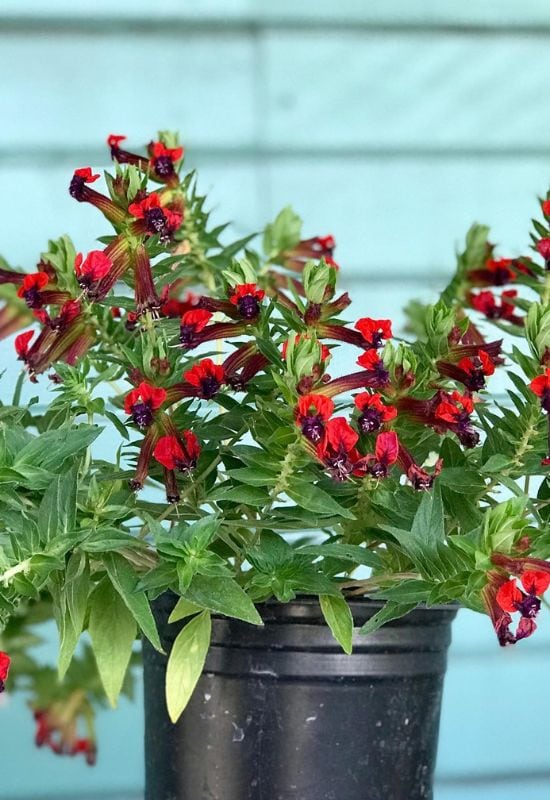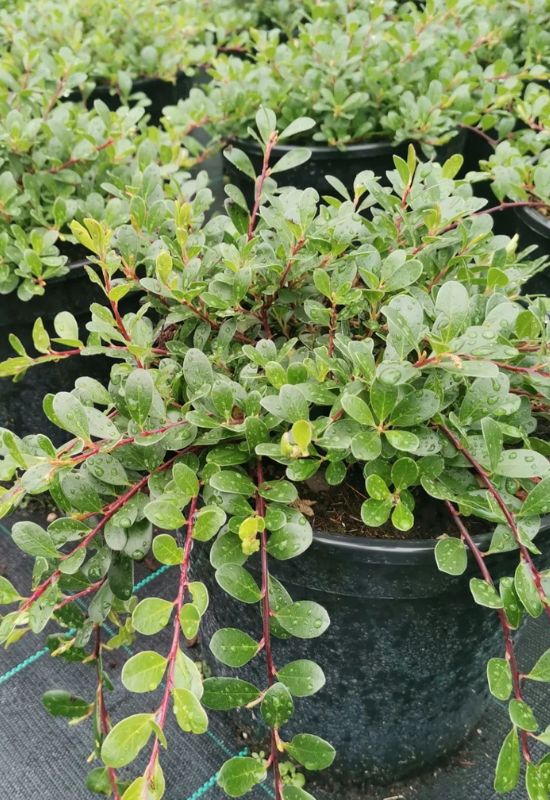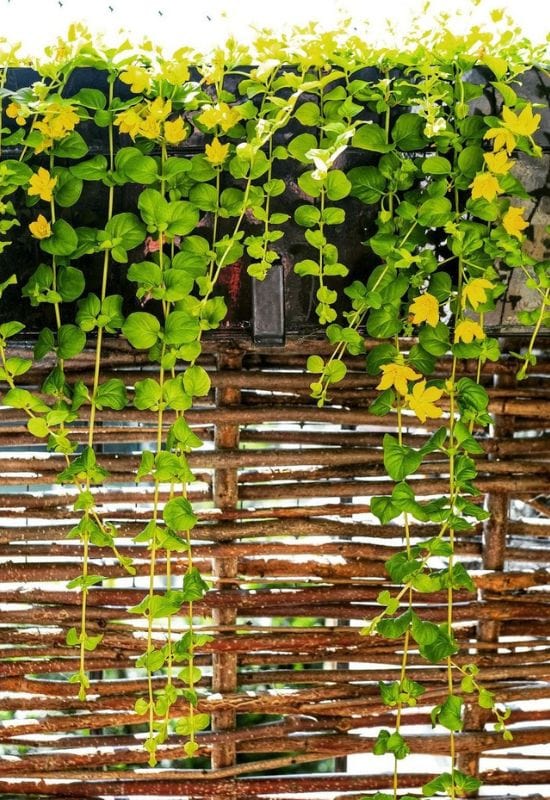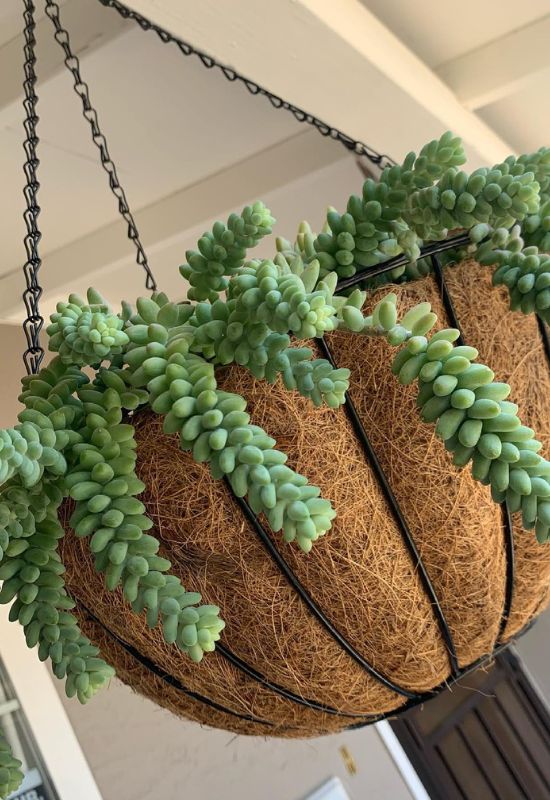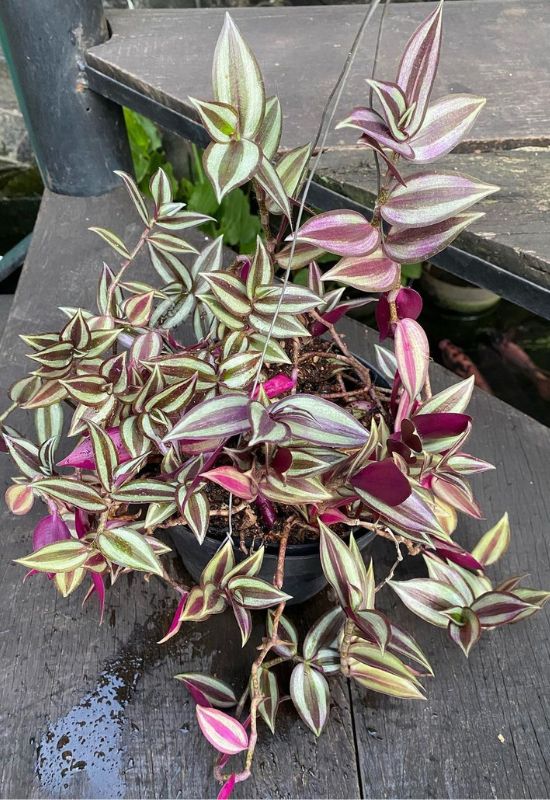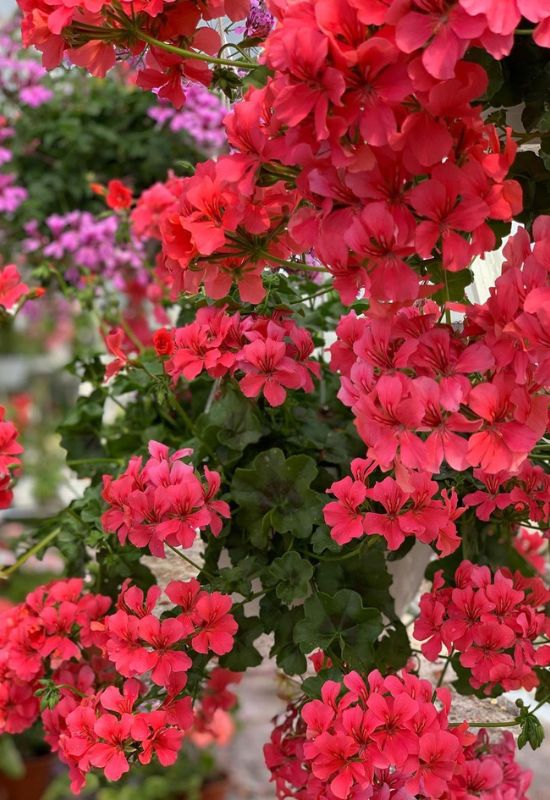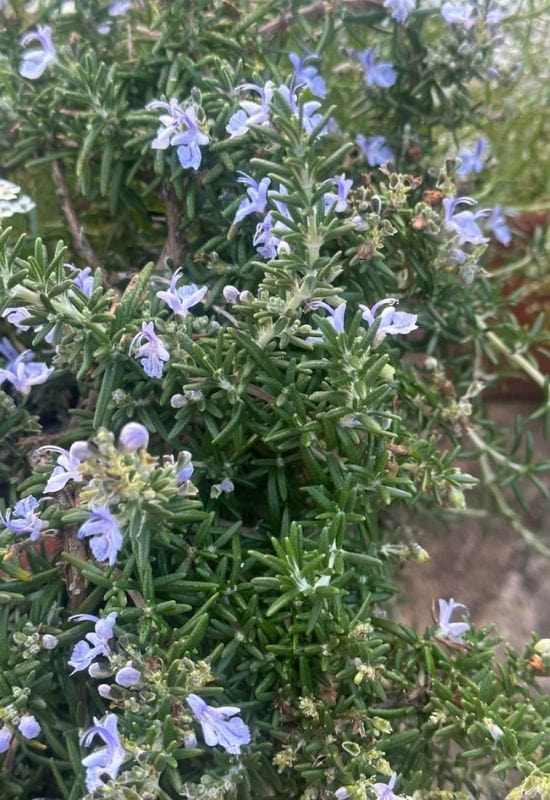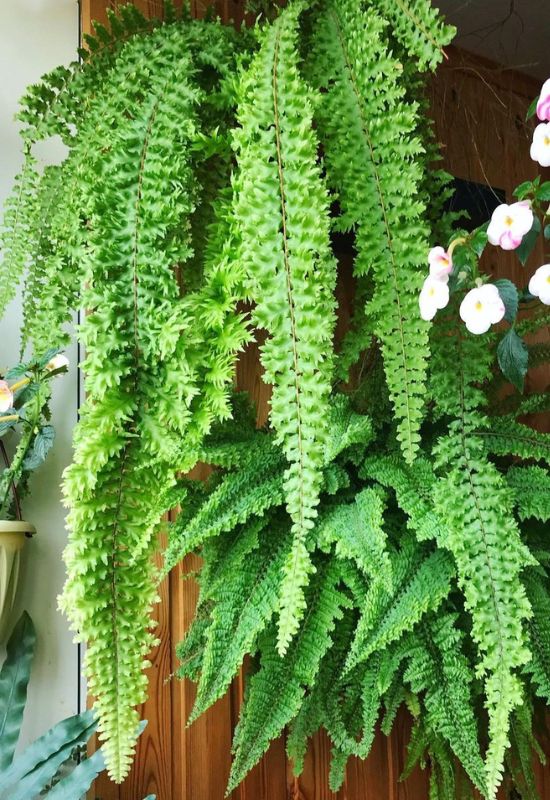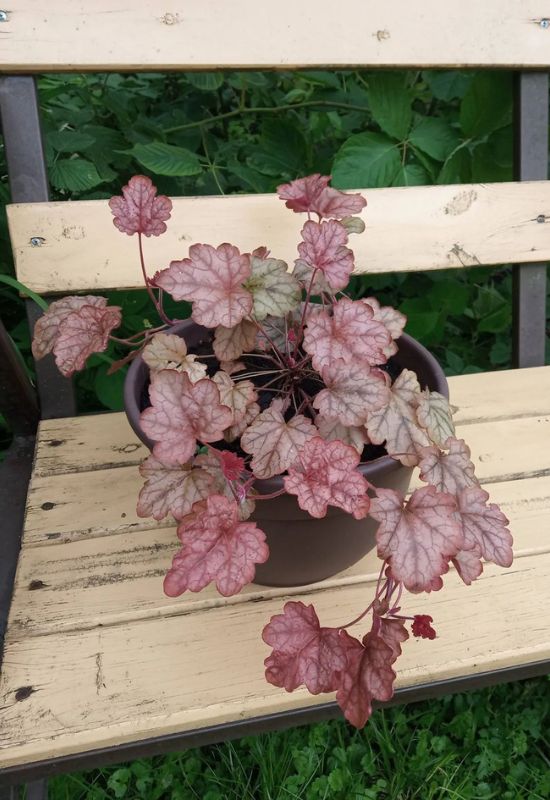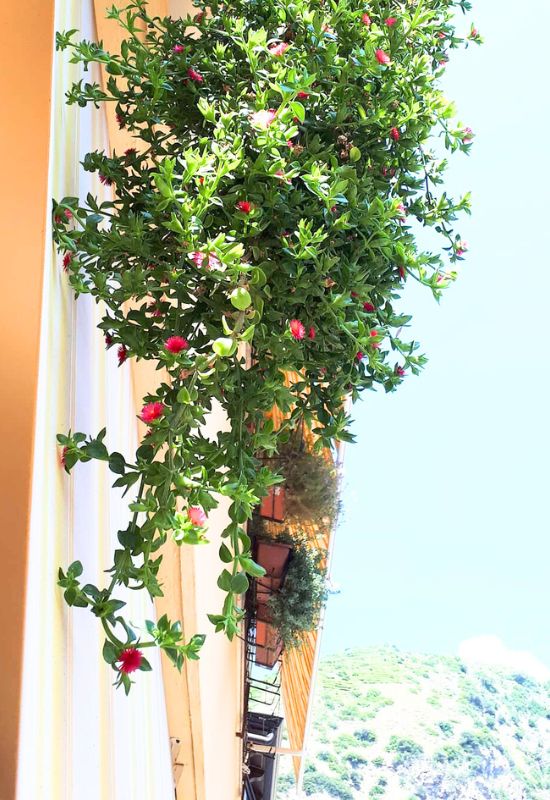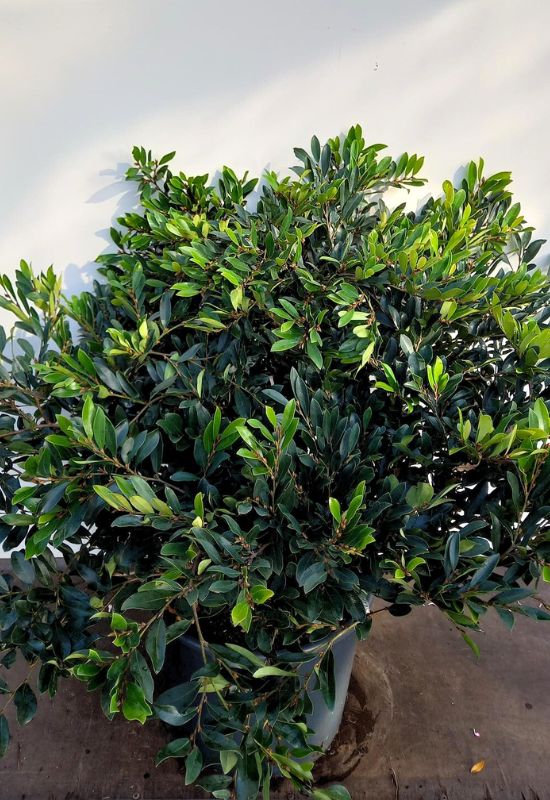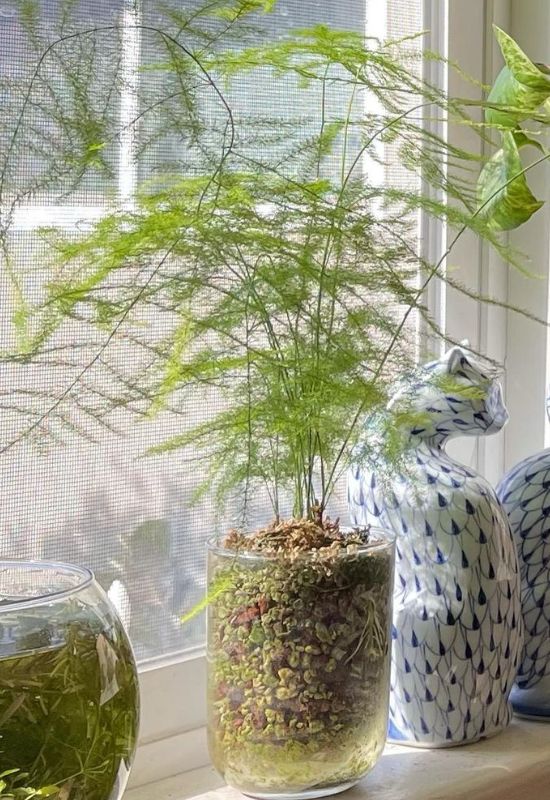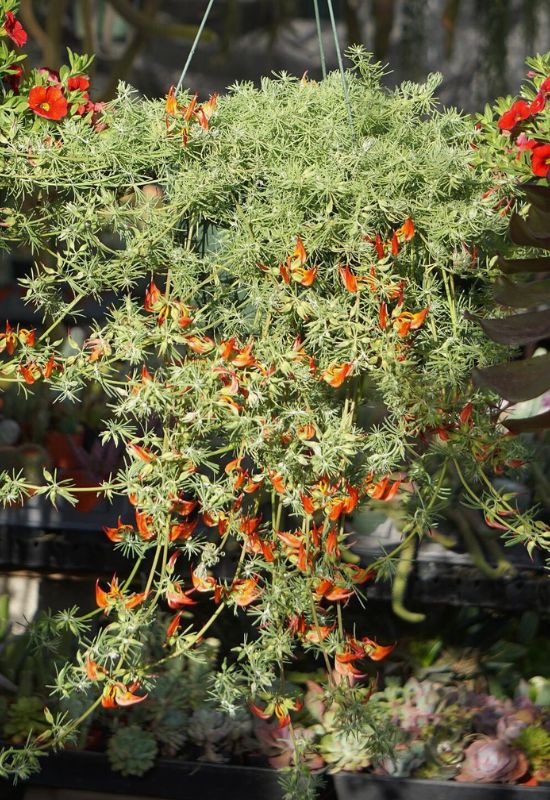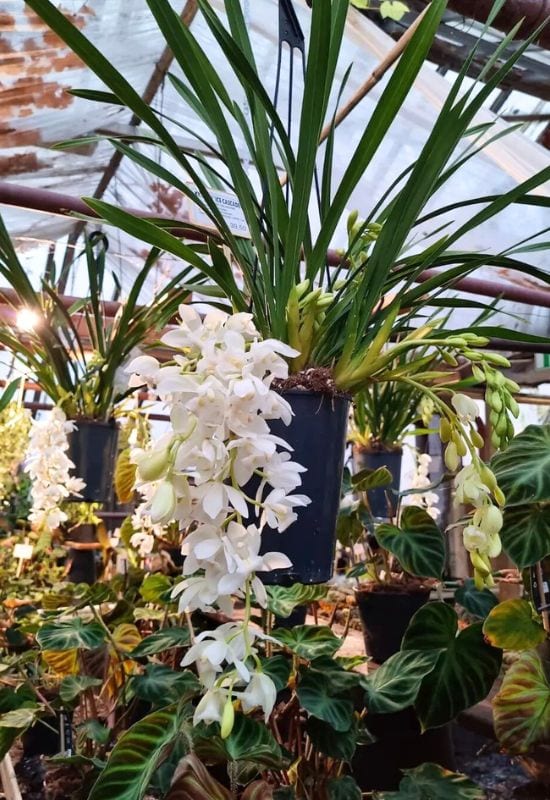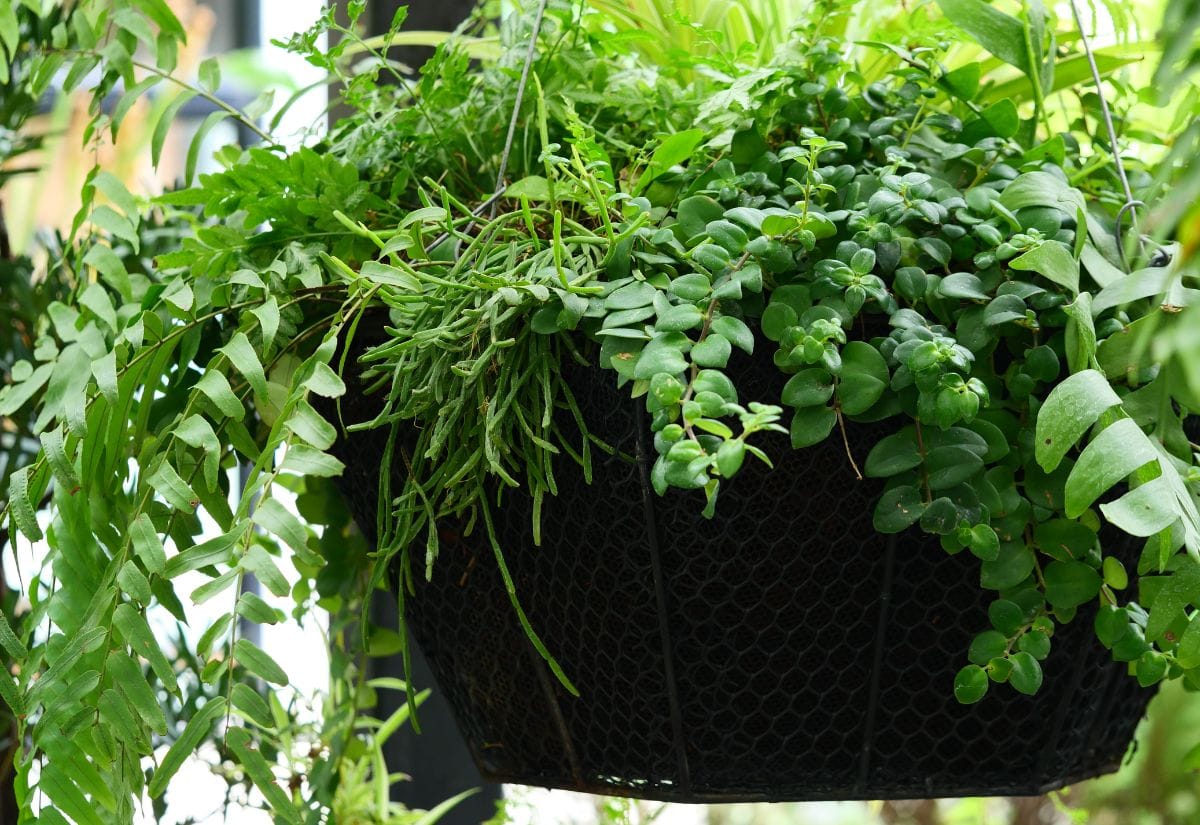
You have some hanging baskets that need draping branches, maybe some brightly colored, and even fragrant flowers, and lush foliage – possibly all year round? Then the solution is to choose an evergreen variety, and your containers will look florid, alive, and attractive in spring, summer, fall and winter as well!
Of course, evergreen plants are perennials that keep their foliage on all through the winter season; and this makes a big difference in a garden or on a terrace, and even indoors, if you wish. Some will be cold hardy, and even if it snows, they will keep their leaves on under the white coat fallen from the sky. Others are soft and exotic, and they will need hot climates.
But luckily, there are really many easy to grow, very generous varieties of evergreen plants that you can grow in your hanging baskets and enjoy them through the four seasons!
20 Evergreen Plant Varieties for Hanging Baskets That Stay Green and Florid All Year Round!
We have tried to strike a balance between exotic and cold hardy evergreen varieties, so your hanging baskets will never need to look empty and sad in winter, whether you have them indoors or outdoors, in cold or hot gardens!
And you will see how these varieties suit different needs and growing conditions, starting with the first, a Sun loving evergreen from Mexico!
1: Bat-Faced Cuphea (Cuphea llavea)
Native to Mexico, the first evergreen plant for your hanging baskets we would like you to meet is a fast growing sub shrub, with particularly dense branching, and covered in many small, lance shaped mid green leaves that persist all through the winter season.
Keeping fresh throughout the year, the foliage will also host a very long and generous floral display that lasts from late spring to late fall!
And the flowers really stand out because they are scarlet red, very bright and sparkling indeed, tubular, and with a striking violet purple blotch at the lips.
Each blossom is about 1 inch long (2.5 cm) and protruding filaments grow out of them, with great elegance. And this shape is a favorite with hummingbirds and butterflies! They don’t seem to be put off by the fact that, at close distance, the blossoms look like the faces of bats!
Super easy to grow, Sun and heat loving, bat-faced cuphea will soon trail from your hanging baskets with its finely textured foliage and scattered fiery blooms… But it is equally great for ground cover and to edge pathways.
2: Bearberry (Arctostaphylos uva-ursi)
If your garden is in a cold country, but you still want healthy foliage cascading from your hanging baskets, even under a cloak of snow, you can: just grow super hardy barberry!
Native to Northern America, Europe and Asia, this evergreen and trailing small shrub has really glossy, fleshy and rich green oval leaves, sometimes with a touch of yellow around the margins, and they don’t mind frost at all… But it may turn orange and red, to warm up your garden or terrace when you most need it!
But when spring comes, it will also give you small but really charming white lantern shaped blooms with pink tips, nodding beautifully at the tips of the little branchlets and very fragrant indeed!
And that’s not all, because the flowers will turn into berries that ripen in the fall to bright scarlet, and they are edible, for you, your family and birds!
An absolute little and sweet beauty in hanging baskets, cold hardy and evergreen bearberry is a safe bet in cold countries, but you can also grow it as groundcover, to underplant shrubs, on banks and slopes and in coastal gardens!
3: Golden Creeping Jenny (Lysimachianummularia ‘Aurea’)
Here is another very cold hardy trailing and evergreen perennial for your hanging baskets, and you won’t believe that it will keep its foliage fresh looking even at very freezing temperatures!
In fact, it has a showy quality, starting with the bright green heart shaped but rounded leaves that cascade on thin drooping branches in opposite pairs. The become thinner and thinner towards the tips, with a very elegant effect.
The actual shade ranges from luminous lime to sophisticated chartreuse, and thus will keep your garden fresh all year round.
But it is in summer when this winner of the prestigious Award of Garden Merit by the Royal Horticultural Society shows the other side of its personality: a strong, vibrant and luminous bloom will suddenly burst!
And the flowers are bell shaped, bright golden yellow and 1 inch across (2.5 cm), again descending from above like vibrant and sunny smiles!
Yet again, you can grow golden creeping jenny in containers, but in other situations as well, and it is easy to propagate it by stem cuttings in spring. So, if you have a rock garden or even a boggy area, go ahead and take advantage of this little evergreen trailing beauty!
4: Burrow’s Tail (Sedum morganianum)
A succulent (and evergreen) classic of hanging baskets is Sedum morganianum, native to Mexico, and commonly known as burrow’s tail. Why?
Because its trailing, draping branches are covered in very decorative plump leaves that look like sweets, and they form a wonderful, fine, decorative pattern that looks like the tail of a little mammal, like that of a fox, or a meerkat…
But it also forms very geometric patterns, like a relief on the wall of a church, mosque or temple… But unlike the animals I mentioned, the foliage has a wonderfully soft and bright greenish blue color!
And when summer comes, it will willingly blossom, with fleshy and almost waxy star shaped flowers, of of a very vibrant red color indeed! Very common as an indoor or patio plant, it has also won the Award of Garden Merit by the Royal Horticultural Society.
Burrow’s tail is ideal as a very striking succulent and evergreen plant in outdoor hanging baskets in hot countries, but if you live in cold climates, you will have to take it indoors to shelter it over the cold season.
5: Wandering Jew (Tradescantia zebrina)
A classic of hanging baskets in sunny Mediterranean gardens, wandering jew is a very colorful evergreen variety native to Mexico, with all the party crazy personality of that country!
Yes, because “ever-green” does not really describe it too well… On the soft and trailing branches, which break up very easily, you will see a carnival in fact, with stripes of purple, cream, green and even blue.
The actual shades that the broad, fleshy and lance shaped leaves take on depends on lighting, and it will also change throughout the year! Still, it is an ever changing and surprising plant that grows fast and quickly recovers from setbacks.
Rose flowers will appear at the tips, and they are small but unusual, with only three petals, and this can happen sporadically all through the year! Loved indoors as well, it is a worthy receiver of the award of Garden Merit by the Royal Horticultural Society.
If the branches of wandering jew break, don’t panic! Just use them as stem cuttings to propagate it. This way you can grow it in your hanging baskets in your garden or on your terrace, but also as ground cover or to create amazing color games in rock garden.
6: Rock Cress (Aubretia deltoidea)
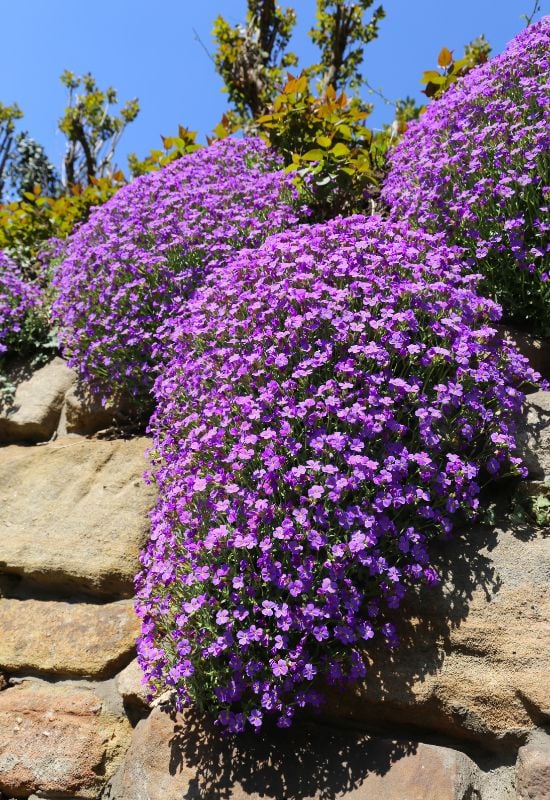
Rock cress is yet another choice you have in a cold region, but it may drop its foliage if winters are too harsh, as it is technically a semi evergreen.
Otherwise, it will keep its tiny but very dense little leaves on all through the year, giving your hanging baskets extremely fine texture, with their gray green color as well…
It is a creeping variety, which will drape down containers, but it is mainly used to create a mat, or a carpet, between paving stones.
But the incredible spectacle that it offers you will show its overwhelming effect as the days get warmer and hotter, around mid spring… Yes, because at this time it will totally turn bright magenta purple!
And this is to do with the innumerable flowers that literally cover it completely, each with four rounded petals and a delicate eye in the middle.
But you can also pick other colors, because there are many cultivars now, including ‘Purple Cascade’ in mauve, ‘Dr Mules’ in violet blue, or ‘Aurea Variegata’, which has gold in the variegation of its leafy mound! Whichever you pick, expect lots of bees, butterflies and pollinators t come to visit your garden…
Easy to grow and, as we said, a favorite for ground cover, rock cress will naturally look great in a rockery, but also in containers and hanging baskets, mainly at low level though, because this way you can fully enjoy its spectacular blooming spectacle!
7: Ivy Geranium (Pelargonium peltatum)
Now, imagine town in the Alps, with houses and chalets with steep roofs… What do you outside every window? Seas of colors, white, magentas and reds, that literally fill the whole picture with their bright beauty!
And these are often ivy geraniums, wonderful evergreen flowering plants native to South Africa, and real queens of summer days! Of course, they love a warm place, but you can shelter them over winter.
Thus way, their fuzzy and fleshy, aromatic leaves will keep their deep green color, with that soft texture given by the deeply cut, palmate leaves that cluster together. But not everybody likes their fragrance, in fact, mosquitoes and other stinging insects hate them.
And this is one reason why they are put on “guard” of indoor spaces. But the other is the profusion of flowers that grow on the tips, but so florid that they can literally cover the whole plant, and they will do so all the way from late spring to late fall!
Note that there are also trailing varieties, maybe better suited to your plans, like the rose ‘Cascade AcapulcoCompacte’ or its snow colored sister, ‘Cascade White’.
Great in hanging baskets and window sills, ivy geraniums actually love to grow in containers, where they blossom much more profusely. Alternatively, grow them among rocks, because they like their roots to touch stones before they send out their amazing flowers.
8: Creeping Rosemary (Rosmarinus officinalis prostratus)
Yes, we are talking about rosemary, but of a particular type. Unlike the upright shrubs we usually think of, this is actually a trailing shrub, and evergreen at that! Of course, its leaves are packed with oils, and needle like, dark forest green and glossy… And of course, they are also very aromatic.
Actually, while others may or may not be good for cooking, because some may have a soapy smell, Rosmarinus officinalis prostratusis always perfect as a herb to add to your roasts and other dishes.
Its woody branches will arch beautifully and drape your hanging baskets, forming a dense and finely textured waterfall of leafy fragrance… It is as useful as a decorative plant as it is for culinary and medicinal reasons.
And then, usually in spring and summer, you will see softlavender to sky blue flowers fill it almost completely! Look closely and you will see that they are actually quite stunning, resembling little orchids, or lobelias…
And you will also notice that lots of butterflies, bees and other pollinators are buzzing around them to take advantage of their sweet nectar… But you can expect secondary blooms in the fall as well, and, in the right climate, of a Mediterranean type, even winter can see a few blossoms appear here and there! It is also tolerant of very harsh conditions, and quite a strong plant indeed!
Ideal for a kitchen or herb garden, creeping rosemary brings fragrance, blooms, colors and evergreen foliage to hanging baskets that you can shelter during the winter months, maybe on your kitchen window, if you live in a less than mild climate. This way you too can have the full experience of the Mediterranean all year round!
9: Boston Fern (Nephrolepisexaltata)
And we now come to a classic hanging basket plant both as a houseplant and outdoors. Of course, to have it in a garden or on a terrace, you will need to live in a fairly warm region, and I am talking about Boston fern.
In fact, it is an exotic fern, despite its name, and it is native to Africa, Central and South America, Polynesia, the West Indies and also to Florida. And for thus reason it matches the fresh and relaxing personality of the underbrush you find in temperate forests, and the leafy and exotic one that you find in tropical rainforests…
It is loved for its long, arching and generally triangular fronds, which are divided into many small and pointed leaflets. They are also slightly waved and serrated, which adds to the texture it creates, and also to the amazing light games it causes in dappled shade.
These are tightly packed together, creating a beautiful and elegant mound like few other varieties can. And, of course, unlike many of her sisters from colder regions, it is evergreen, so, you will enjoy this effect all through the winter months.
But there is more, and it is the color that they display: in fact, it is of the brightest but also most refreshing emerald green ever!
No, you will not het any blossoms from this perennial, but I think you will easily forgive it for this. Popular and easy to grow, it has also won the Award of Garden Merit by the Royal Horticultural Society!
What is more, Boston fern is one of the few evergreens that you can grow in your hanging baskets even in full shade, where it will bring its own bright green light all year round.
Do water it regularly though, because it is tough and fairly drought tolerant, but with dry spells its super lush foliage will become thinner and lose sheen and vigor.
10: Apache Beggarticks (Bidens ferulifolia)
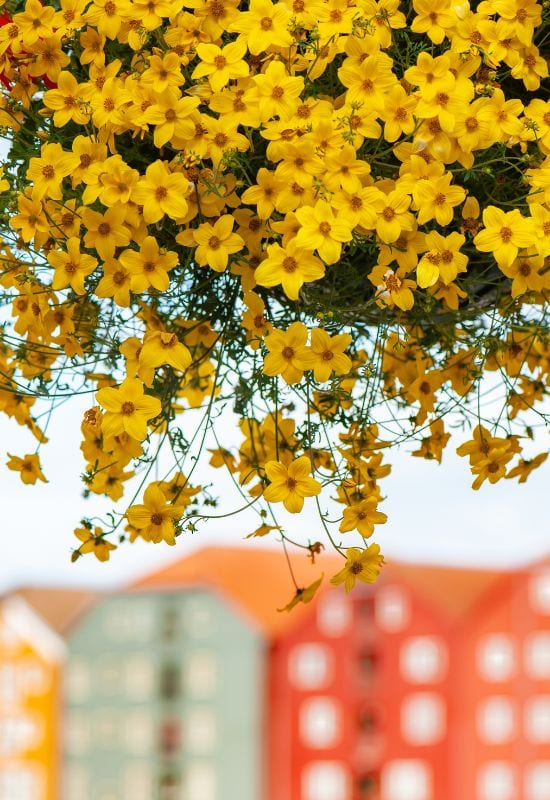
Here is a sunny beauty from Arizona, Texas and Mexico to fill your hanging baskets with energetic light till the end of the season, and very fine foliage all year round: Apache beggarsticks!
In fact, its leaves are really finely cut, dissected, developing into small, very thin lobes that grow to the sides of the mid rib, with a dark green color. This will give you texture like filigree, while summer will see it explode with loads of flowers!
The blooms are about 2 inches across (5.0 cm) of a strong and deep yellow shade and touches, or dashes of orange towards the center, where a lovely but small tuft of golden filaments brings everything together.
The petals are lightly dented, even to the point of making them seem heart shaped at times. Move close to your containers and you will enjoy their sweet fragrance as well.
This display will start in early summer and continue into the months of fall, while many butterflies, bees and other pollinators add a fluttering buzz to the very, very generous blossoms!
Sturdy and low maintenance, Apache Beggarsticks will require a hot climate to be grown as a generous blooming evergreen perennial.
However, it can also be treated as an annual, as it flowers profusely in its first year. But if you do, you won’t enjoy its fine foliage during the winter months.
11: ‘Copper Cascade’ Foamy Bells (x Heucherella ‘Copper Cascades’)
If you are looking for a really striking leafy beauty, you could consider growing ‘Copper Cascade’ foamy bells in your hanging baskets, rather than in a bed or border.
However, while it is a cold hardy variety, it will be evergreen only in mild climates, where winters are warm, and in very sheltered places.
But the very lush foliage is simply extraordinary, with its palette of pale green, copper, pinkish, golden overtones and purplish shades!
All this will be painted on very broad and lobed leaves that form an extremely dense and exotic looking mound, but it also has a special quality that made us choose it instead of other x Heucherella cultivars…
It has a trailing habit, which means that it will drape containers like a rainbow waterfall. Spring will also see it blossom, with long stems bearing cream white little flowers; they are pretty, true, but maybe not its most eye catching asset. Nevertheless, they will attract lots of butterflies and bees to your garden or terrace.
Yet another valuable asset of ‘Copper Cascade’ foamy bells is that it is very shade tolerant, and this means that you can get it to drop its colorful foliage down your hanging baskets even if sunlight is a real problem in your garden or on your terrace.
12: String of Pearls (Senecio rowleyanus)
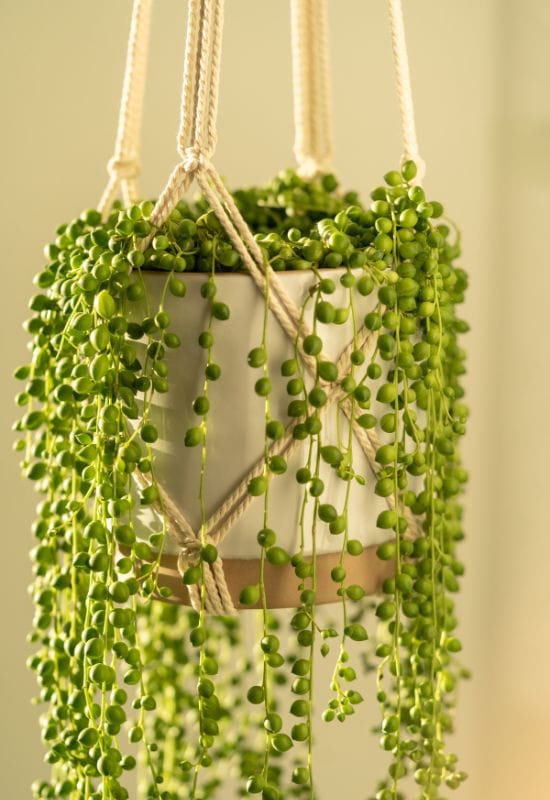
Now it is time to meet a plant that does not look like any variety you have ever seen. But you have probably met string of pearls already, because it is a common trailing succulent for hanging baskets.
But it really grows better outdoors, also because it grows quite long and it likes the open air… What is more, keep it away from children, because it looks very appetizing, but it is actually toxic. And why would a hungry kid eat it?
Because its evergreen leaves look like candies! Actually, they are almost perfectly spherical, and arranged quite regularly on thin draping and drooping stems, so, it is like growing a lot of necklaces that descend from your containers.
But there is more, the foliage can be green, sometimes with aquamarine tonalities and even faint hints of bluish, but also variegated with lovely cream shades, and if you consider that it is quite glossy, you can see why you can confuse these leafy globes for marbles…
The blossoms too look quite unusual, and they also open at a strange time, from fall to spring. They are hard to describe, maybe like snow white ice cream cones with purplish and golden yellow filaments that protrude and then curl at the tips.
Being an evergreen succulent, string of pearls needs warm and dry climate t grow well outdoors, but it is also easy to prune, and you could shelter it indoors in colder climates. But for hanging baskets, its unique look really has no match!
13: English Ivy (Hedera helix)
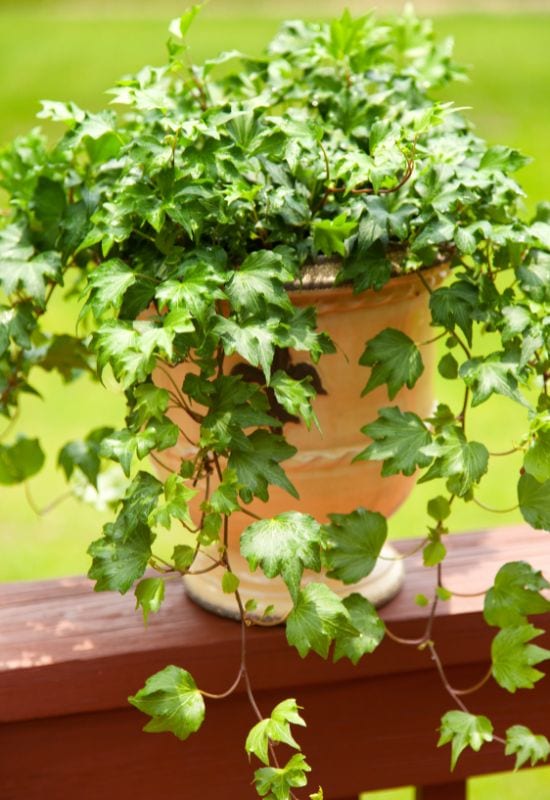
Of course, there is no reason why you could not grow ivy in your hanging baskets, not only on walls, and the most popular variety is Hedera helix, or the English variety, which, naturally, is evergreen.
And we mainly love it for its lush and lustrous foliage. As you will know, its leaves usually have 3 to 5 lobes, and they grow very densely on this climbing plant, but if you let it drop, they will form curtains that can grow to an extremely long length.
On the plus side, you can just cut it back and it will not suffer at all, and it will keep draping your containers with its leafy beauty! Very glossy and dark forest green (usually) there are also variegated cultivars, like ‘Anne Marie’ with cream edges or ‘Goldchild’ with yellow margins.
But if you prefer a dynamic, even dramatic effect, ‘Ivalance’ offers you a frilly texture with a brighter, emerald tonality. Yes, it does blossom in the fall, but its blooms are inconspicuous, in small clusters and on the whitish to greenish side, but they are followed by decorative dark purple, almost black shiny fruits.
Cold hardy and evergreen, English ivy is a very safe choice if you want foliage all year round in your hanging baskets. Your main role will be keeping it in size, because it is low maintenance and also very easy to propagate.
14: Baby Sun Rose (Aptenia cordifolia)
Baby Sun rose goes by many names, including heartleaf iceplant, red aptenia, dew plant and rock rose. And maybe this is due to its popularity in sunny gardens… In fact, this little and sweet looking succulent is very easy to grow, and it is really good for hanging baskets.
The reason that is that its evergreen, bright and glossy emerald green fleshy leaves are very dense on the trailing stems, and they have a shape we all love: they are heart shaped, or, technically speaking, cordate. With good (but little) care, they keep very healthy all year round, falling from your containers with elegance and a really enchanting touch.
Easy to propagate by stem cuttings, it also looks lovely as a companion to bigger, more showy plants. And its blossoms are quite vibrant but delicate as well.
They are not big, about 0.5 inch across (1.25 cm), but their bright and strong rose to magenta, sometimes with touches of red as well, color, makes them stand out really well.
Daisy like and with many long and thin petals, the blooms will appear scattered on the leafy backdrop from spring to summer, but in the right climate, you can enjoy them virtually all year round, just like its foliage!
A little classic in hanging baskets all over the Mediterranean region, baby Sun rose is a charming presence in any garden or on any terrace, and it is easy to grow and propagate, ideal for coastal regions because it is salt tolerant as well. It is also great in rock gardens and for ground cover.
15: ‘Blue Cascade’ Distylium (Distylium ‘Blue Cascade’)
Now, I would like to look at an unusual variety for hanging baskets: ‘Blue Cascade’ distylium. Let me explain… It is actually a compact shrub, so you will need a fairly big container to grow it, about 12 inches (30 cm) or so.
And it is far more appreciated in borders and full soil, but it is cold hardy, and it has a good habit for your needs: its branches are arching, and while they will not fully drape the pot, they will grow outside, giving you evergreen foliage all tear round even in fairly cold countries… Well, ever-green…
The ovate and stiff leaves emerge in a purplish bronze shade, but they will soon turn into an amazing blue color, along the queen, imperial and pewter range, and this adds to the sophisticated elegance of thus plant.
Yes, some greenish hints may emerge, but they only add to the overall effect. And it adds another point of interest to your winter garden, because it will blossom just un that season, with a profusion of reddish brown little flowers that grow straight on the branches.
Of course, to enjoy ‘Blue Cascade’ distylium, you will need to grow it in a low hanging basket, maybe with some other, draping varieties to accompany it, but if you live in a cold region, you want amazing evergreen foliage, and even a spark of extra color in winter, and you want to be creative…
16: Sea Fig (Carpobrotus edulis)
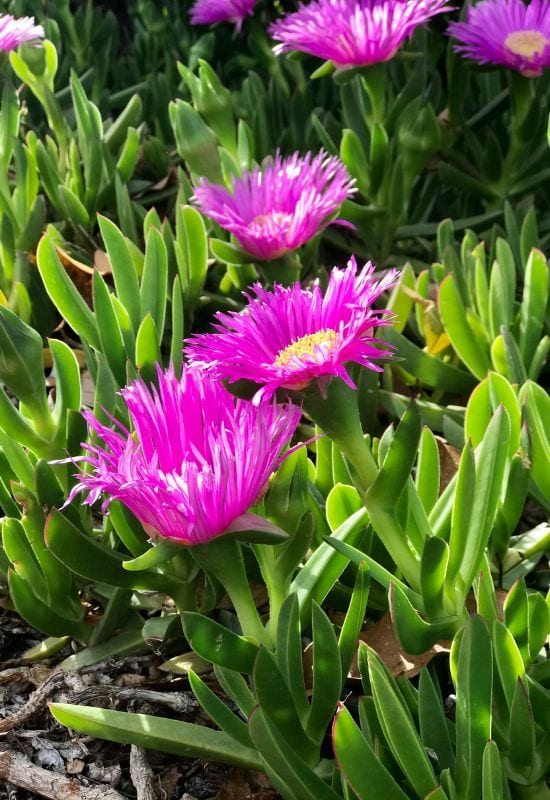
Back to a heat and Sun loving evergreen variety for hanging baskets in hot and even exotic regions: called sea fig, Hottentot fig or highway iceplant, Carpobrotus edulis is an incredible creeper that will cascade from your hanging baskets with a jaw dropping spectacle.
This succulent usually grows spontaneous on sunny beaches, where it can form large colonies that thrive by the seaside, and this makes it ideal for coastal gardens as well.
Let’s start with the foliage… The leaves are like little horns, actually triangular in cross section, glossy and very fleshy indeed. Their color is on the bright to mid green, with emerald tones, and bluish hues can creep up as well!
And their sap is good to heal mosquito bites as well! Growing on stems that can grow to a whopping 165 feet long (50 meters), your main job will be cutting them back… Its flowers are produced from April to October, and they can be 6 inches across (15 cm)!
they are daisy like, with many thin and stiff looking petals, waxy in texture, and of the brightest shades of rose, magenta, but also yellow and cream! Finally, they will produce cone shaped fruits, that are also edible and considered a delicacy!
Growing to 3 feet long in a single year, sea fig is an excellent exotic succulent for hanging baskets in a hot garden; spectacular beyond belief, it is both decorative and very useful, and very easy to propagate as well. And you can grow it un fairly mild climates as well!
17:‘Homestead Purple’ Verbena (Verbena canadensis ‘Homestead Purple’)
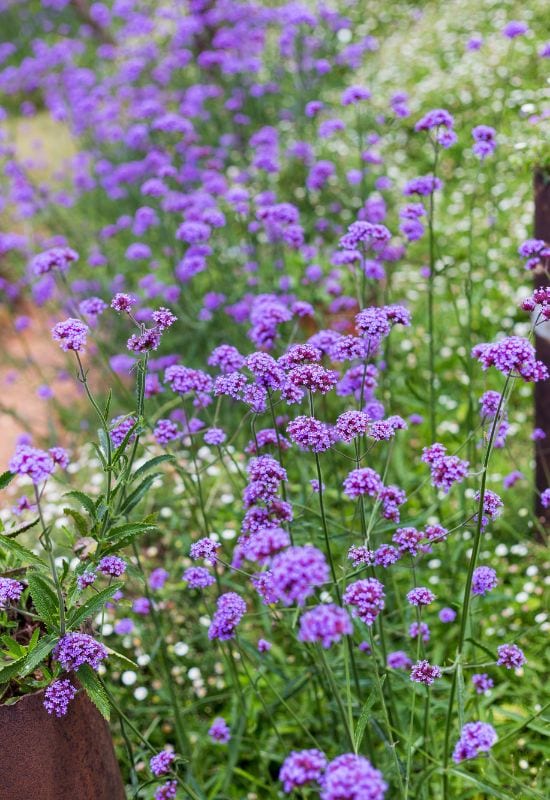
Some verbena varieties are trailing, so ideal for hanging baskets, and one of the most popular of all is ‘Homestead Purple’. And, being cold hardy, it had to make it into our list.
To start with, it is also one of those semi evergreen cultivars that keep their foliage on during the winter season, but only in USDA hardiness zones 7 to 10.
Otherwise, you can still enjoy its tiny leaves growing on a mesh of thin branchlets for the rest of the year… They are quite intriguing, with they bright emerald green color and growing like little stems that will drape your containers.
But, of course, we also love it for its very long and impressive floral spectacle… And in fact, you will be hard put to see the foliage all the way from late spring to late fall, when the clusters of bright purple little flowers take over and almost completely cover the whole plant! Well, that’s not all you will see, because lots of butterflies and pollinators will come to add a final decorative touch.
Easy to grow and natural looking, ‘Homestead Purple’ offers your hanging basket a vibrant but also fine effect with both its lively blooms and decorative fine foliage.
18: Asparagus Fern (Asparagus densiflorus)
Yes, this plant is related to the asparagus we enjoy eating, but it is a common evergreen variety, especially indoors, which really suits hanging baskets.
The most amazing thing about this perennial is its foliage… And it is not just because of the bright emerald green color that it keeps on all through the year.
In a way, this gives you the impression that it never changes, and it may even look to some like an imperturbable plastic plant. And this is helped by the fact that the leaves are super stiff, hard to the touch, and… Well, their texture is incredible, thanks to the thousands of tiny, thin, needle like leaflets that form a cloud of leafy sophistication that’s hard to match!
The cultivar ‘Myersii’ has even won the Award of Garden Merit by the Royal Horticultural Society, thanks to its conical plumes… Anyway, it is also a flowering beauty, though the little flowers that appear in late spring are inconspicuous, whitish, but not forgettable, because they are very fragrant indeed! And they are followed by bright scarlet red berries that add a final touch of color.
Perfect for a very fine effect, asparagus fern, a.k.a. plume asparagus, is a really exquisite choice in elegant hanging baskets, in gardens or on terraces, like a delicate but permanent friend with a peaceful but also cheerful personality.
19: Lotus Vine (Lotus maculatus)
And again, if you live in a warm climate, you are lucky, because you can grow lotus vine, also called golden parrot’s beak, in your hanging baskets! And it is a really wonderful evergreen, exotic and tropical looking, and with a very unusual and eye catching personality.
In fact, one of its names tells you something about its amazing blossoms… How can you describe them? Well, they do look like many beaks of little parrots coming out of this trailing plant and pointing to the sky.
But they may also remind you of flames, because they are pointed, curved, and they display the most vibrant and bright colors of golden yellow, fire orange and scarlet red!
These blooms will emerge in early spring, announcing the good season, and they will keep amazing you till early summer.
What is more, they contrast beautifully with the bluish green, of course evergreen, foliage. In fact, the leaves are tiny, needle like, and very dense indeed, and you may even confuse it for a very odd and original conifer, judging from them!
A very playful, cheerful, and definitely child friendly evergreen variety for your hanging baskets, lotus vine is by far one of the most attractive varieties you can ever grow, assuming winters are mild where you live.
20: ‘Ice Cascade’ Boat Orchid (Cymbidium sarah jean gx ‘Ice Cascade’)
I wanted to close this journey with a bang, and so I left a real wonder for your hanging baskets for last! And if you can’t grow ‘Ice Cascade’ boat orchid in your garden, for climate reasons, do consider it as a houseplant anyway!
Let’s meet this candid queen then! What will you see? You will literally see waterfalls of exotic flowers, usually once a year, and lasting up to 10 weeks!
Being an orchid of the Cymbidium genus, the blossoms have five elliptical petals, and a central labellum (the “lip”) that looks a bit like a butterfly, or a flying dove with spread out wings!
They are white, of course, but with delicate pink blushes and opening from pale yellow greenish buds. Each blossom is about 2 inches across (5.0 cm) and you will get drooping panicles packed with a few dozen of them!
But what will you smell? You certainly won’t miss their sweet and enchanting fragrance! On the other hand, look above this tropical floral display and you will also notice the long and fleshy, gently arching and super glossy evergreen leaves, that complete the ensemble with their super rich dark emerald color and rain forest luxury!
And you will also have a worthy winner of the most coveted gardening prize of all: the Award of Garden Merit by the Royal Horticultural Society, of course!
Definitely the most exotic and evocative variety of evergreen plants to grow in hanging baskets on our list, ‘Ice Cascade’ boat orchid will transform your garden or terrace into a corner of tropical paradise in hot countries, or you can enjoy the same effect indoors in colder ones.
Hanging Baskets That Stay Fresh and Lush all Year Round
And now you know that you don’t need to look at your hanging baskets in winter and see them empty and forlorn. We have selected many varieties of evergreen plants that will keep them lush during the cold months, and many with gorgeous flowers as well… And we have even found quite a few for temperate and cold gardens and balconies as well!

Written By
Amber Noyes
Amber Noyes was born and raised in a suburban California town, San Mateo. She holds a master’s degree in horticulture from the University of California as well as a BS in Biology from the University of San Francisco. With experience working on an organic farm, water conservation research, farmers’ markets, and plant nursery, she understands what makes plants thrive and how we can better understand the connection between microclimate and plant health. When she’s not on the land, Amber loves informing people of new ideas/things related to gardening, especially organic gardening, houseplants, and growing plants in a small space.

